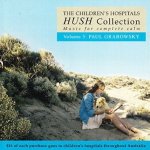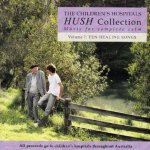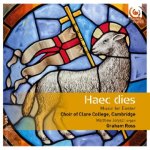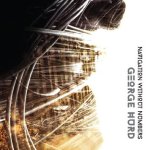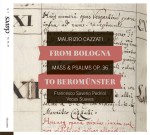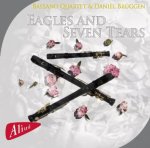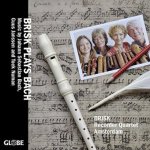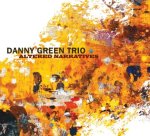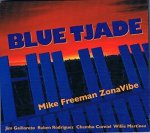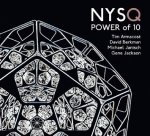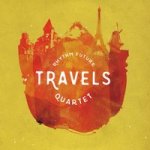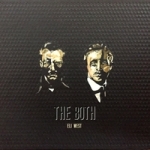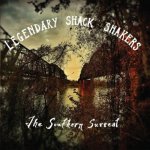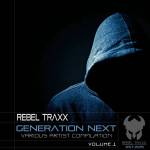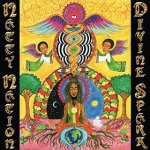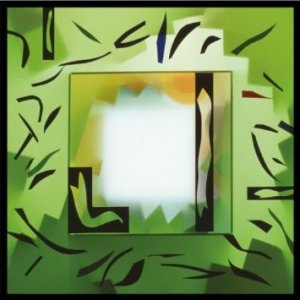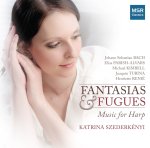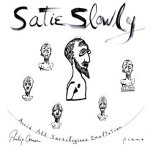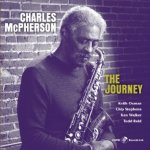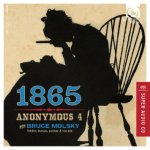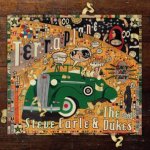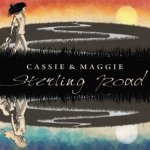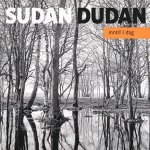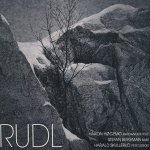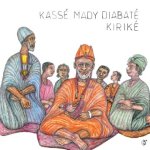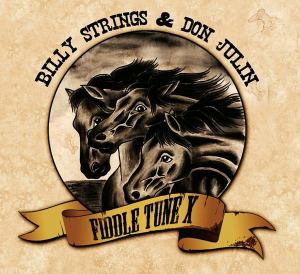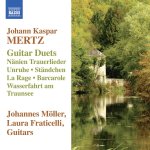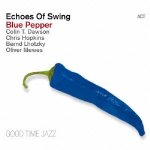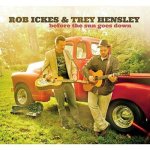PICK OF THE MONTH
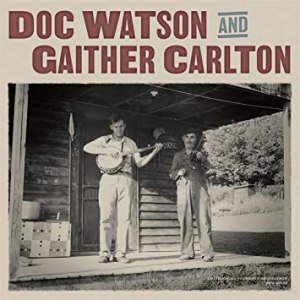 Doc Watson & Gaither Carlton
Doc Watson & Gaither Carlton
Doc Watson & Gaither Carlton
Smithsonian Folkways
SFW CD 40235
Doc Watson is a legendary name in folk and bluegrass music today, one of the pioneering stylists of flatpicking lead guitar and an inspiration to generations of traditional and New Acoustic musicians. But in 1960 he was playing rockabilly electric guitar in a bar band in the western mountains of North Carolina and no one outside of that region knew anything about him. When folk impresario Ralph Rinzler followed a lead and found Watson, it took him some time to convince him that urban audiences wanted to hear the old-time tunes–Watson’s experience was that even the people in his home town of Deep Gap were more interested in rock’n’roll. Eventually Rinzler convinced Watson and Gaither Carlton, Watson’s father-in-law and a locally renowned fiddler, to come and play some shows in New York. This disc presents previously-unheard tapes from those first two concerts, played at the NYU School of Education and at a folk club called Blind Lemon’s. It’s only 38 minutes of music, but the sound quality is surprisingly good and the performances are outstanding: tunes that Doc Watson fans will recognize as favorites (“Groundhog,” “Blue Ridge Mountain Blues,” “Handsome Molly”), classic weepers (“He’s Coming to Us Dead,” “Dream of the Miner’s Child”), and hot fiddle tunes (“Billy in the Low Ground,” “Double File”). Watson and Carlton each switch to banjo once in a while, which they play in at least three distinctive styles that will be of particular interest to folklorists. This album is a literal treasure and should find a home in every library.
CLASSICAL
 Various Composers
Various Composers
Cantilena: Piazzolla, Falla, Granados, Villa-Lobos
Tabea Zimmerman; Javier Perianes
Harmonia Mundi (dist. PIAS)
HMM902648
The viola doesn’t get enough credit as a solo instrument. It’s like the alto in a choir–generally stuck singing harmonies to the show-off sopranos. But the viola has long been one of my favorite instruments; I love its rich, throaty tone and I love the fact that it basically never shrieks or whines, so this new release caught my attention immediately. On this lovely collection, violist Tabea Zimmerman teams up with pianist Javier Perianes for a recital program that focuses on the work of Spanish and Latin American composers of the late-19th and 20th centuries, writing in a variety of styles: Astor Piazzolla’s work is a tango, of course, while Manuel de Falla’s and Enrique Granados’ suites are arrangements of popular or folk tunes. Perhaps most revelatory are the four brief pieces by Pablo Casals, the world-renowned cellist who was much less famous as a composer. All of the playing is blissfully beautiful.
 Jean-Daniel Braun
Jean-Daniel Braun
Sonatas for Flute & B.C. (4 discs)
Musica ad Rhenum
Brilliant Classics (dist. Naxos)
95764
Rick’s Pick
The liner notes to this magisterial set open with an all-too-familiar refrain: “We know next to nothing about the life of Jean-Daniel Braun, composer of the works presented here.” Sure enough, Braun is yet another example of a first-rate composer who fell from from the public eye after his death–though in his case, it seems also to be true that he was relatively little known during his life. During his career he was overshadowed by his contemporary Michel Blavet, the still-famous flute virtuoso, but there’s a good argument to be made that Braun’s writing was at least as skillful and demanding as Blavet’s. Jed Wentz is a marvelous exponent for these works, and while this set does not represent a world-premiere recording of all the pieces presented (Marion Treupel-Franck recorded a selection of them a few years ago), it does appear to be the first time all of them have been recorded and made available together.
 Jean Louis Duport & Felix Battanchon
Jean Louis Duport & Felix Battanchon
Etudes for Cello (2 discs)
Martin Rummel; Sebastian Hartung
Paladino Music (dist. MVD)
PMR 0087
 David Popper
David Popper
Etudes for Cello Op. 76
Martin Rummel; Sebastian Hartung
Paladino Music (dist. MVD)
PMR 0084
I realize that listening to three discs worth of systematic studies for cello, designed to strengthen technique, may not sound like the most attractive prospect to the average listener. But in the cases of both of these recordings, it’s worth making the effort to overcome that natural hesitation. The duo etudes by Duport are especially lyrical and melodically attractive, while helping the cellist not only learn important fingering and bowing patterns, but also learn to listen carefully and play in tune with others. The Twelve Studies in Thumb Position by Battanchon that round out the set are designed to help the cellist gain mastery of difficult fingerings high up the neck, and also make for surprisingly enjoyable listening. The same is true of Martin Rummel and Sebastian Hartung’s other recording of etudes under consideration here, a disc consisting of two etude collections written by the great cello virtuoso David Popper. Unlike Duport and Battanchon, Popper remains famous to this day both as a soloist and as a composer. The program on this album consists of his Ten Grand Etudes of Moderate Difficulty and Fifteen Easy Melodic-harmonic Etudes with an Accompaniment of a Second Cello, and is a bit drier and more explicitly academic in tone, but still quite lovely. And, of course, both of these recordings will be of use to libraries supporting programs in cello pedagogy.
 Ludwig Van Beethoven; Justin Heinrich Knecht
Ludwig Van Beethoven; Justin Heinrich Knecht
Symphonie Nr. 6, Op. 68 “Pastorale”; Le portrait musicale de la nature
Akademie für Alte Musik Berlin / Bernhard Forck
Harmonia Mundi (dist. PIAS)
HMM 902425
Rick’s Pick
Beethoven’s sixth symphony is among his most popular, and is frequently recorded. But it’s not nearly as frequently recorded by a period-instrument ensemble–and to my knowledge it has never been recorded alongside the little-known Justin Heinrich Knecht’s Portrait musical de la nature. This pairing is built on an argument: that Beethoven must surely have been aware of Knecht’s programmatic work (which was written some years before his) and that his sixth symphony was, to a significant degree, a response to it. There’s certainly no question that the two pieces combine to make a marvelous program, each of them evoking (both subtly and directly) sounds of nature and emotions connected to the pastoral life. As always, the Akademie für Alte Musik Berlin acquits itself admirably, playing with focus, depth, and energy. Highly recommended to all collections.
 Arvo Pärt
Arvo Pärt
Stabat Mater: Choral Works by Arvo Pärt
Gloriae Dei Cantores / Richard K. Pugsley
Paraclete (dist. Naxos)
GDCD 065
 Arvo Pärt; Pēteris Vasks; James MacMillan
Arvo Pärt; Pēteris Vasks; James MacMillan
Stabat
Choir of Clare College, Cambridge; The Dmitri Ensemble / Graham Ross
Harmonia Mundi (dist. PIAS)
HMM 905323
Arvo Pärt grew up in Estonia, during a time when it was one of the most brutally repressive of the Soviet Bloc countries. Over time his religious devotion (and the overtly religious content of his music) got him into trouble with the authorities, and he was finally able to leave the country in 1980–and thereafter became the world’s most frequently performed living composer. These two discs offer programs centered on one of his most monumental works: the Stabat Mater setting. Originally written for three voices with string trio, both Gloriae Dei Cantores and the Choir of Clare College perform the composer’s later arrangement of the work for choir and string orchestra. Contrasting the style of the two ensembles when performing this work (and the others on the two discs) is interesting: Gloria Dei Cantores have a more fullsome, 20th-century sound, while the Choir of Clare College goes for a more straight-toned and ancient tone; my personal preference is for the latter, but a library supporting a choral curriculum would do well to collect examples of both for pedagogical purposes. Apart from the Stabat Mater setting, these two releases offer very different programs; the Clare College recording incorporates contemporary works by Pēteris Vasks and James MacMillan, that complement the Pärt pieces nicely.
 Antonio Vivaldi
Antonio Vivaldi
I colori dell’ombra (2 discs)
Ophélie Gaillard; Pulcinella Orchestra
Aparté Music (dist. PIAS)
AP226
This is something of a themed collection of pieces, inspired by the instrument that cellist Ophélie Gaillard has been playing for the past 15 years: a Goffriller cello of unknown provenance, built near Venice sometime in the 18th century, and possessed of an unusually rich lower register. Working with the Pulcinella Orchestra (on period instruments), Gaillard seeks to recreate the feeling of Vivaldi’s Venice, with all of its bustling and joyous energy. The program consists mainly of cello concertos, one of which is a reconstruction based on a notebook kept by one of Vivaldi’s students (and is presented here in a world-premiere recording), but also includes a sinfonia and, interestingly, two opera arias. These pieces do indeed show off the unqique richness and depth of Gaillard’s instrument, but more importantly they communicate the joy of Vivaldi’s music. Beautifully played, beautifully recorded.
 Simon Fisher Turner & Edmund de Waal
Simon Fisher Turner & Edmund de Waal
A Quiet Corner in Time
Mute
CDSTUMM439
From bustling and joyous energy we move to unsettled and grumbling abstraction. A Quiet Corner in Time was conceived by composer Simon Fisher Turner as the sonic accompaniment to an architectural installation by ceramicist Edmund de Waal at the Schindler House in Los Angeles. The music is something of a collage work consisting mainly of field recordings made in Vienna and Los Angeles–it’s not musique concrète, exactly, but it certainly has one foot in that tradition. Sounds are radically altered in some cases and sometimes they are purely representational, evoking childhood memories or exotic scenarios, depending on the listener’s frame of reference. At no point is the music harsh or confrontational, but it’s never exactly comforting either. This is very much a 20th-century composition, and I mean that in a good way.
JAZZ
 3D Jazz Trio
3D Jazz Trio
I Love to See You Smile
Self-released
3DCD-2020
Rick’s Pick
Pianist Jackie Warren, bassist Amy Shook, and drummer Sherrie Maricle met while playing as members of the DIVA Jazz Orchestra; recognizing in each other kindred spirits, they formed the Three Divas Jazz Trio (3D Jazz Trio for short) and have now made two albums. On I Love to See You Smile they open with a strutting, sassy take on the title tune, before then stretching out on a varied program of standards, one that jumps easily from a Latin favorite (“Besame Mucho”) to classic balladry (“Angel Eyes”) and to greasy organ-trio-style blues funk (“Back at the Chicken Shack”). No matter what style or period they cover they sound completely at ease, with Warren in particular turning every solo into a virtual survey of jazz history. This album is like an especially satisfying meal made up of a variety of delicious dishes. Highly recommended to all libraries.
 Ed Bennett
Ed Bennett
Portland Calling
Saphu
SCD-0035
Great tunes and great playing on this outing by bassist and composer Ed Bennett, who (as the album title suggests) is based in Portland, Oregon. The titles of some of his tunes convey the same pride of place: “Holliday in Portland” (that’s a pun, not a typo), “March Mist,” “Way Out Left.” Bennett writes in a powerfully swinging, straight-ahead style, with complex but accessible heads that hark back unapologetically to both the bebop and the cool periods of jazz history. Among his sidemen, pianist Dan Gaynor is particularly notable as a soloist. The production is a bit iffy–both the piano and the drums sound as if they were miked at a considerable distance, and the album’s overall sound is just a bit stuffy and constrained. But the playing shines through.
 Brian Landrus
Brian Landrus
For Now
Blueland
BLR-2020
Rick’s Pick
Honestly, this is not the kind of jazz that usually gets me excited: the melodies kind of meander, the chord changes are often sideways and indirect, and for the most part it doesn’t really swing. But holy cow, it’s just gorgeous. Leader Brian Landrus is a master of low reeds, but he’s also a magnificent composer. By bringing together a group that includes Fred Hersch (whose pianistic style is a perfect match for Landrus’ unusual progressions and abstract melodies) and drummer Billy Hart, he’s built a perfect team; and when he steps out solo and unaccompanied (as he does on a brilliant bass clarinet version of “‘Round Midnight” and on alto flute with his own “Night of Change”), the results are magnificent. I was also surprised by how happy I was to hear the string quartet come in every time it did. This is an altogether brilliant album by a master who knows not only how to blow and not only how to write, but also how to arrange for maximum impact.
 BK Trio
BK Trio
Hit It
Self-released
No cat. no.
When the lineup is guitar, organ, and drums, you know what to expect: funk and soul. And guitarist/composer Brian Kooken and his trio don’t let you down. They come right out of the gate with the title track, a burning, swinging blues, and then proceed to lay down an entire album’s worth of original compositions that could have been written and recorded in this genre’s 1960s heyday: the busily bustling “Always Looking Up,” the finger-snapping “Hatzas Groove,” the slow and funky “In That Funk Again.” And there’s even some gentle bossa (“Brazilian Blues”) to break things up. Kooken’s tone is warm and soulful, and organist Greg Hatza and drummer Robert Shahid provide brilliant accompaniment. Highly recommended to all jazz collections.
 Jon Balke
Jon Balke
Discourses
ECM
2648
For his third solo album, Norwegian pianist Jon Balke continues to explore approaches to mixed-media performance, blending live acoustic piano with software-created sounds and processed recordings–and also blending composed material with improvisation. If this leads you to expect something aleatory, chaotic, or otherwise Cagean, think again: while the music isn’t strictly programmatic, it was inspired by Balke’s concerns with the state of current social and cultural discourse, and is by turns sad, discombobulated, and angry, but never disorganized or random. The electronic sounds that run like a silvery but discontinuous thread throughout these pieces are always subordinate to the sound of the piano itself, and often create timbral juxtapositions that shed new light on the notes Balke is playing. His work is always worth hearing, and this album is unusually affecting. For all jazz collections.
FOLK/COUNTRY
 Pam Tillis
Pam Tillis
Looking for a Feeling (digital only)
Stellar Cat (dist. One RPM)
No cat. no.
Pam Tillis (yes, she’s the daughter of country legend Mel Tillis) has deep respect for her country roots and clearly loves and honors them–but at the same time, while her music comes out of country it is in no way defined by it. The quietly moaning steel guitar of “Lady Music” nudges up against wah-wah guitar; “Dolly 1969” and “Karma” both rock as much as they two-step; and honestly, I hear kind of a blend of Kate Bush and Eddi Reader in “Better Friends.” “Dark Turn of Mind” somehow manages simultaneously to evoke a honky-tonk and Tin Pan Alley, and thematically it reminds me of Big Sandy’s “Night Tide.” Tillis’s voice is sweet and clear, but its deceptive gentleness masks a hard core of world-weariness and resolve. Great songs, great performances, great album of modern country music.
 Jake Blount
Jake Blount
Spider Tales
Free Dirt
DIRT-CD-0097
Rick’s Pick
In recent years we’ve seen more and more attention being paid to the African-American roots of old-time and bluegrass music. On Spider Tales singer, banjo player, and fiddler Jake Blount sheds light on those roots, performing tunes and songs that in a few cases will be familiar to those with an interest in old-time music (“Grey Eagle,” “Rocky Road to Dublin”), but that for the most part hit with the force of revelation. Blount sings and fiddles alone on the keening “Brown Skin Baby” and is accompanied by the percussive sounds of dancer Nic Gareiss on the eerily beautiful gut-strung banjo solo “Goodbye, Honey, You Call That Gone.” Fiddler Tatiana Hargreaves is featured prominently as well, and the two of them make a powerhouse duo. Notes on the tunes’ origins are provided throughout. This is one of those rare albums that is as informative as it is enjoyable.
 Del Barber
Del Barber
Easy Keeper
Acronym
DB03
Here’s a very nice helping of straight-up honky-tonk and country-fried Americana from Manitoba singer-songwriter Del Barber. His writing is deeply informed by his time spent helping his mom, who was a drug addiction counselor in a rehab center during his youth. He credits that experience with teaching him how to listen, and you can hear that skill in his lyrics about good people caught in bad situations and about deeply flawed people trying to navigate the consequences of their choices. You’ll also hear his plainspoken skill as a singer, and the somewhat flashier skill of his sidepersons, who are exceptional musicians. Most of these songs are gentle, several are pretty wry, and all of them have a big heart. And there are lots of great hooks.
ROCK/POP
 Enter Shikari
Enter Shikari
Nothing Is True & Everything Is Possible
So
SOAK215
Enter Shikari’s motto is “Abusing music genres’ worthless boundaries since 2003,” and they continue to live by it. In recent years, their unique blend of screaming post-hardcore, dubstep/D&B, and pop has been shifting further and further from the hardcore end of the spectrum and more and more towards pop–and, interestingly, the prog tendencies that have always lurked just below the surface are becoming more apparent. Their latest album boasts the most (and sharpest) hooks of their career, as well as the most unabashed prog moves: note, for example, the two-part conceptual suite “Marionettes,” which begins with a three-minute orchestral composition (“The Discovery of Strings,” get it?). Elsewhere we hear the usual lyrical concerns (the environment, science vs. religion, ambivalence about technology, etc.), expressed with an ever-sharpening sense of melody. Another triumph from an outstanding band.
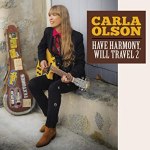 Carla Olson
Carla Olson
Have Harmony, Will Travel 2
Sunset Blvd (dist. Redeye)
CD-SBR-7953
Seven years ago, Californian/Texan singer-songwriter Carla Olson put out an album called Have Harmony, Will Travel, which celebrated the pop music tradition of two-voice harmony. The second installment in the series follows the same formula as the first, with Olson playing and singing alongside a stellar cast of vocal guests that includes Peter Noone (Herman’s Hermits), Stephen McCarthy (Long Ryders), Gene Clark (the Byrds) and many others. You’ll hear jangle pop, country rock, and Latin rock, among other genres, all of it delivered with gritty intensity and professional polish. The exception is her rendition of the folk classic “Scarlet Ribbons,” which she sings with Terry Reid, whose somewhat ravaged voice blends raggedly with her quiet harmony and his aggressive acoustic guitar in a very affecting way. Highly recommended.
 Pere Ubu
Pere Ubu
By Order of Mayor Pawlicki: Live in Jarocin (2 discs)
Cherry Red (dist. MVD)
CDBRED806
Rick’s Pick
There have been lots of live Pere Ubu albums over the past four decades, and most of them have, let’s face it, been terrible–often based on cassette recordings made by audience members. This one is an anomaly: high-quality board tapes of a recent concert in Jarocin, Poland, and of a set that prominently featured songs from Ubu’s early albums: “hits” like “Heart of Darkness,” “Codex,” “Caligari’s Mirror,” and “Real World.” And the second disc finds them playing–gasp–several covers, including “Kick Out the Jams” and “Sonic Reducer” (the latter of which, believe it or not, was actually written by Ubu frontman David Thomas, and which slyly segues directly into “Final Solution,” an early Ubu favorite that pays lyrical homage to “Sonic Reducer”). Thomas sounds, as he always has, like a somewhat strangulated penguin, and the band rocks like nobody’s business. And this being Ubu, of course things get deeply strange at the very end. This album is a must-have for any library that collects deeply in rock and pop music.
 Stubbleman
Stubbleman
Mountains and Plains
Crammed Discs/Made to Measure
MTM 44
Though it’s being billed as an “electronic/ambient” project and as something of a celebration of ambient music’s 1970s heyday, the debut from composer/producer Pascal Gabriel (recording as Stubbleman, not to be confused with Beardyman) sometimes sounds to me more like Kraftwerk than like, say, Brian Eno. “Griffith Park,” in particular, motors along quite nicely, and “South 61 West 14” also pulses with a calm energy and a definite (and fairly complex) chord progression. Mountains and Plains is quite explicitly programmatic, and is built on sounds that Gabriel recorded during a long road trip in the United States; the music ends up being pleasant, evocative, and interesting, and this album is a tremendously rewarding listen overall.
 The Legendary Ingramettes
The Legendary Ingramettes
Take a Look in the Book
Virginia Folklife Program
VFL-CD-2020
Rick’s Pick
More than fifty years ago, Maggie Ingram’s husband left her with no money and several children. Having no other financial prospects, she taught her kids to sing and took them on the road with her as a gospel group. That’s the heritage of the Legendary Ingramettes, who are now led by Maggie’s daughter Almeta, and who continue the tradition of gutsy, all-female, spirited electric gospel singing. The program on this album consists mainly of songs that Maggie wrote, with a Bill Withers tune thrown in for good measure, and it’s an absolute joy. “When Jesus Comes” is perhaps the highlight, a hands-in-the-air explosion of joyful anticipation, but honestly there’s not a single weak track on the album. In fact, the word “weak” can’t even really stay in your mind while listening to this remarkable tribute to one of the strongest women America has ever known.
 L. Shankar
L. Shankar
Chepleeri Dream
Cleopatra
CLO1594
Violinist L. Shankar has been a legend for decades, a musician deeply trained in the Carnatic classical tradition. But most of his career has been spent venturing far outside the boundaries of that tradition, collaborating with jazz musicians like John McLaughlin and Jan Garbarek and rock artists like Peter Gabriel and Wendy & Lisa, among many others, while also inventing a radically new version of the violin itself–a double-necked electric model. His latest album finds him surrounding himself with what is probably the most eclectic crew to date, a shifting group that includes bassist Tony Levin (King Crimson, Peter Gabriel), singer Jonathan Davis (Korn), bassist Norwood Fisher (Fishbone), and saxophonist Scott Page (Supertramp), just to name a few. The music contains elements of Indian music (including the occasional vedic chant) but is overwhelmingly rockish, even proggy. Not too proggy, though–these are pop songs, unusual as they may be. Recommended.
 VickiKristinaBarcelona
VickiKristinaBarcelona
Pawn Shop Radio
Storysound (dist. Redeye)
161-035
VickiKristinaBarcelona is an all-female trio who combine elements of cabaret theater, folk, jazz, Cajun, and basically any other musical style that happens to cross their path into a unique blend–and on their debut album, they’ve put their multifarious talents together in a tribute to Tom Waits, covering songs like “Way Down in the Hole,” “Gun Street Girl,” “Jersey Girl,” and “Innocent When You Dream.” Because he’s such an unconventional singer–his voice famously sounds like that of a chain-smoking 80-year-old carnival barker trapped in a jalopy in the process of breaking down in the middle of a dirt road–it’s easy to overlook Tom Waits’ exceptional gift for writing conventional songs. (For crying out loud, “Jersey Girl” even rhymes “charms” with “arms.”) Of course, he can also write weird and twisted ones, and you’ll find both on this slightly weird and twisted album. VKB’s arrangements are completely new and are frequently revelatory, and their singing is a delight.
WORLD/ETHNIC
 Jah9
Jah9
Note to Self
VP/Steam Chalice
VP2659
On her fifth album, the brilliant reggae singer and songwriter Jah9 continues to explore themes of roots, culture, righteousness and spirituality, while also delving into deeply introspective themes and expanding her musical palette somewhat. The title track does both of the latter things, as she counsels with and encourages herself (“I’m going to be okay…”) over a slow funk-reggae groove. Elsewhere, “Field Trip” explores a sort of soul/Afrobeat fusion, “Could It Be” is explicitly soully, and she slips into singjay mode on tracks like “New Race” and “Ma’at.” But for those who love straight-up roots reggae there’s plenty on offer here as well, from the slowly churning one-drop of “Hey You” and “Feel Good” to the horns-driven paean to Haile Selassie “Love Has Found I.” Jah9 continues to set the standard for conscious reggae music.
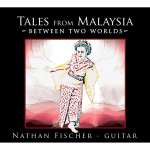 Nathan Fischer
Nathan Fischer
Tales from Malaysia: Between Two Worlds
Soundset
SR1114
Classical guitarist Nathan Fischer lived in Malaysia for six years, and during that time found himself fascinated by the cultural melting-pot it represented, thanks to its location at the crossroads of multiple Asian countries. He began investigating guitar music based on or inspired by Malaysian melodies, and his research led to this, the first-ever Malaysian-themed album of classical guitar music. It features works by such regional composers as Sharifah Faith (the first Malaysian woman to compose a concert piece for classical guitar) and Tan Hooi Song, alongside others by Western composers like Paul Cesarczyk and the great John Duarte. The pieces range widely in style, from classical to folk-inflected to jazzy, and Fischer handles all of the shifts with grace, emotional insight, and deceptive ease. This is a brilliant album of a unique repertoire.
 Mark Wonder
Mark Wonder
Remz of the Dragonslayer (digital only)
Oneness
No cat. no.
I’m not sure there’s a more compelling artist on the contemporary roots reggae scene than Mark Wonder right now; a fine songwriter, he’s also a singer with an utterly beautiful voice–it’s rich and colorful, and his delivery is soully without ever lapsing into the whining nasality that so often afflicts reggae-soul stylists. His lyrics are resolutely conscious, and though I have no idea what he means by “remz” (a term that crops up in his songs as well, as in “days like these just remz me out”), the strict positivity of his messages are a balm to the soul in these troubled times. The accompanying rhythms on this album are original and modern with a clean edge, but not antiseptically digital. There’s only one weak track here, the rather abstract and slightly pretentious “Better Days,” which has no beat and is accompanied by a synthesized harp. Everything else is absolutely killer.
































